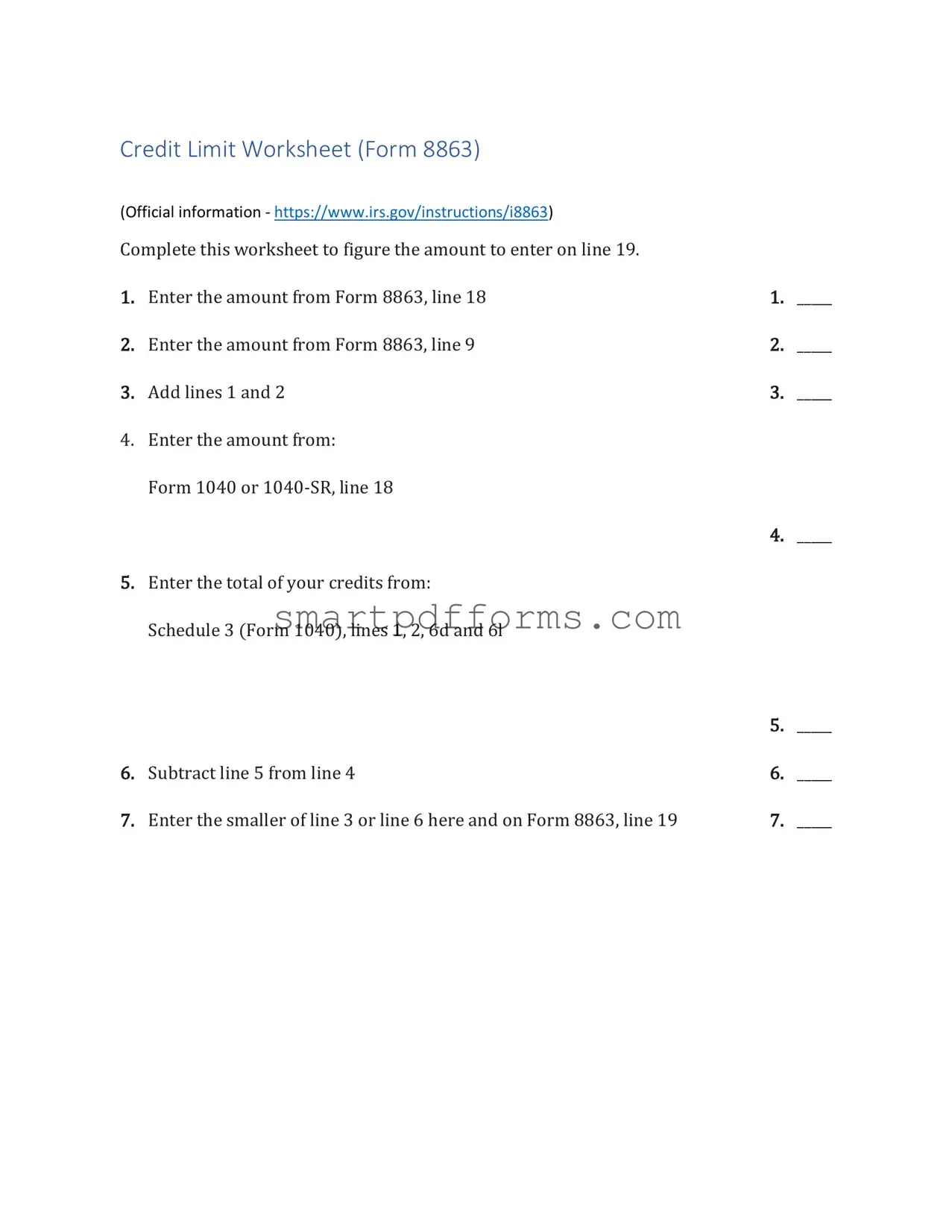- What is the purpose of the Credit Limit Worksheet (Form 8863)?
The Credit Limit Worksheet helps you calculate the amount you can claim on line 19 of Form 8863, which is used to figure out the education credits you're eligible for, specifically the American Opportunity Credit and the Lifetime Learning Credit. These credits aim to reduce your tax bill based on the qualified education expenses you've paid.
- How do I know if I need to complete the Credit Limit Worksheet for Form 8863?
You need to complete this worksheet if you're planning to claim education credits and you've filled out Form 8863, line 18. This worksheet ensures that the credits you claim do not exceed the limit set by your tax liability.
- What are qualified education expenses, and how do they affect the worksheet?
Qualified education expenses include tuition and certain related expenses required for enrollment or attendance at an eligible educational institution. These expenses are crucial for calculating your education credits, as they determine the amount you can enter on lines 1 and 2 of the worksheet, which ultimately influence the credit amount you're eligible for.
- Can I fill out a separate worksheet for each student?
Yes, you must complete a separate worksheet for each student for each academic period they are claiming the credit for. This ensures that the expenses and adjustments are accurately calculated and applied to each student's eligible credits.
- What are the "tax-free educational assistance" adjustments mentioned in the worksheet?
"Tax-free educational assistance" refers to any scholarships, grants, or tuition reductions that don’t need to be included in taxable income. These amounts need to be subtracted from your total qualified education expenses because you cannot claim a credit for expenses that were not out-of-pocket.
- What should I do if the total adjustments are greater than my qualified education expenses?
If the total adjustments exceed your qualified education expenses, you enter "0" for your adjusted qualified education expenses on the worksheet. This means you cannot claim an education credit for that student for that academic period since there were no out-of-pocket expenses.
- How do I figure out the amount to enter on line 19 of Form 8863?
After completing the required lines on the Credit Limit Worksheet, you compare the sum of your education credits with your allowable tax liability to determine the smaller amount. This amount is what you enter on line 19, representing the maximum education credits you're eligible for after adjustments.
- What information from my Form 1040 is necessary for completing the Credit Limit Worksheet?
You need to know the amount from line 18 of your Form 1040 or 1040-SR. This figure represents your tax liability before credits, which is used to ensure your education credits do not exceed the tax you owe.
- How do the total credits from Schedule 3 (Form 1040) impact the worksheet?
The total of your credits from Schedule 3 affects how much you can claim for education credits. These amounts are subtracted from your tax liability to ascertain the maximum allowable education credit, ensuring that the sum of your credits does not result in a negative tax liability.
- What happens if I receive a refund of qualified education expenses?
If you receive a refund of your qualified education expenses in 2022 or before you file your tax return in 2023, you must subtract this refund amount from your total education expenses on the worksheet. This adjustment ensures that you only claim credits for net expenses that were really out-of-pocket.
